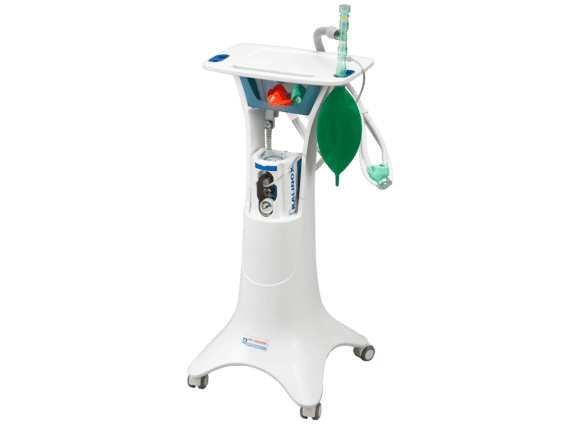The office is closed between July 26 and August 23 included. Until we see you again in the fall, we wish you a wonderful sunny vacation!
The office is closed for the end of year vacations between December 18th and January 6th included.

Meopa (Funny gas)
The term MEOPA stands for "equimolar mixture of oxygen and nitrous oxide". It is a gas mixture, composed of 50% of oxygen and 50% of nitrous oxide.
Administered through a mask to relax your child, it promotes physical and psychological comfort by relaxing him without putting him to sleep.
It is not a general anesthesia, but a conscious sedation, so the child will remain conscious and awake during the whole session.
Initially reserved for the hospital environment, it is only in November 2009 that dentists are authorized to use it. The administration of Meopa by the dentist allows to manage the anxiety of the patients and to relieve their pain during certain dental procedures.
Meopa is prescribed for its anxiolytic and analgesic properties. It has a medical interest but must be well administered.
Meopa, formerly called "laughing gas", is used by dentists as a short-term analgesic for relatively painful procedures such as puncture or fracture reduction.
This gas, because of its sedative effect, helps the most anxious or less cooperative patients, including children (from 2 years old), when they are too agitated to receive dental care.
In dentistry, Meopa therefore considerably reduces anxiety and improves patient comfort.
Beyond the relaxing effect, one of the advantages of Meopa gas is its rapid action and the equally rapid disappearance of its effects. One can also mention the reduction of pain during the treatment and the principle of conscious sedation (the child is not asleep).
Meopa promotes relaxation. Relaxed, the child can look at what surrounds him without feeling pain.
The medication also works against painful sensations, so the child does not feel the sting of the local anesthetic.
When administering Meopa, the dentist follows these steps:
Since April 2019, social security no longer covers sedation with MEOPA gas. It therefore remains at your expense and the price is communicated to you on the estimate issued for any act requiring the use of gas.
Meopa has a few drawbacks.
In case of discomfort, the administration will be interrupted because these possible effects disappear as soon as the administration is stopped.
Since 2009, the use of Meopa by other health professionals has been allowed by a hospital reserve. However, the use of this gas by a dentist can only be done after a mandatory training.
Regular re-evaluation of knowledge is also required.
The use of Meopa by the dentist is also subject to obtaining a certificate of competence issued by the National Order of Dental Surgeons. To obtain this certificate, the dentist must present proof of training in accordance with the guidelines established by the Order.
Dr. Agachi and his team are specifically trained to use Meopa. Please contact us for more information.
+33 (0)1 84 17 77 47
And a team trained to perform treatments safely.
And interactive to reassure children and parents.
About Us
Consultations are by appointment only. In the case of an emergency, please contact the dental office.
Information & Recommendations
Pedodontist: Doctor Adriana Agachi Adeli: 75 4 715431 | RPPS: 10100340396